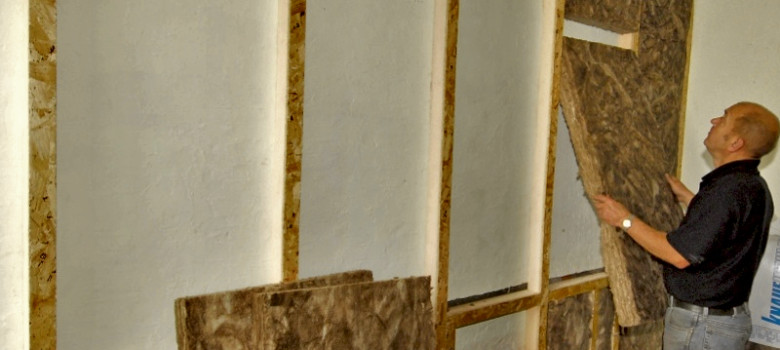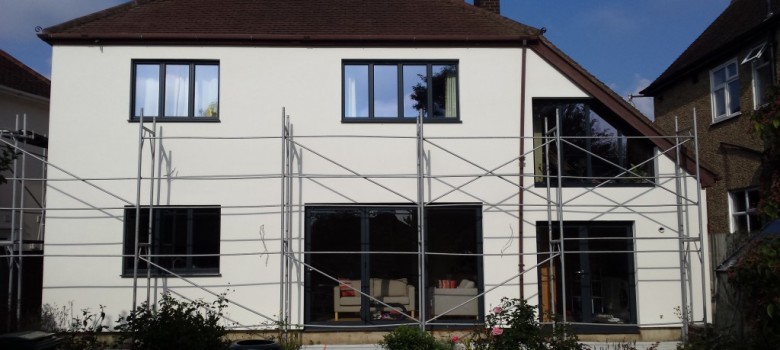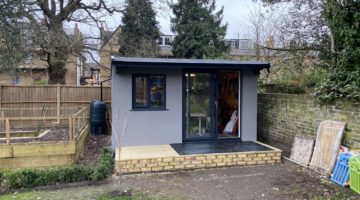
Does my property have solid walls?
If your house was built prior to the 1930s, the chances are that it has solid walls – simply a solid layer of masonry bricks- rather than cavity walls. According to research twice as much heat could be lost through an un-insulated solid wall as through an un-insulated cavity wall. Insulating your walls is a great method of making your home more energy efficient. The insulation will minimise heat loss in the winter, saving you money on your heating bills and preventing your home getting too warm in the summer.
What is internal solid wall insulation?
Internal wall insulation is simply insulation installed to your internal walls. Methods of installation differ depending on which material you use.
Are there different types of internal wall insulation?
There are a couple of methods to insulate a solid wall internally, which are to either use a rigid insulation board or build a stud wall.
Can I do it myself?
We recommend you get a professional in to complete this type of work, and you do not undertake it as DIY unless you are very experienced.
What are the advantages of internal solid wall insulation?
- Internal wall insulation is a great option in solid wall properties where external insulation is not practical or permissible; for example listed buildings, conservation areas, cases in which you wish to preserve the look of the building, where access restricts external work, or in flats, where internal insulation is the only solution.
- Cheaper than external insulation
- Makes no aesthetic changes to the outdoor appearance of your home
- Works well when the home its self is going through a process of internal renovation
What are the disadvantages of internal solid wall insulation?
- It will reduce the room you have in the living areas by up to 10cm (estimated thickness of insulating material 100mm)
- If installed incorrectly, internal insulation can encourage damp.
How is internal insulation installed?
There are a couple of methods of internal solid wall insulation:
Fixing the insulation directly to the wall is ideal if floor space is at a premium, but must only be done where there are no damp issues whatsoever, and the existing plaster is smooth and even. This approach is the most straightforward, as the plasterboard with insulation is attached to the wall using screws or adhesive. This approach requires a solid form of insulation like Celotex or Kingspan, rather than wool-type insulation. The table below shows the various U-values for different types of insulation.
| Insulation material | Thickness of insulation | |||
| 50mm | 100mm | 125mm | 150mm | |
| Expanded polystyrene | 0.55 | 0.33 | 0.28 | 0.24 |
| Polyurethane / Phenolic foam / Polyisocyanurate | 0.65 | 0.39 | 0.33 | 0.28 |
| Foamed glass (with plaster finish) | 0.57 | 0.33 | 0.28 | 0.24 |
Source: Energy Saving Trust
Another option is installing stud walls, with insulation between this and the outer wall. This is generally recommended for properties with uneven internal walls and those with damp issues. However, it also uses up the most internal floor space compared with the other options. This is because it leaves a gap of around 30mm between the outer wall and a stud wall, to which the insulation is attached. Timber stud can use many types of insulation with sheep wool, rock wool, Celotex or Kingspan fixed to the back of the plasterboard.
As damp can be an issue, all internal insulation should come with a vapour membrane.

It is really important that the installer avoids thermal bridging. With so much wood used in the installation, it is easy for this to form cold bridges, which allows the heat to dissipate from the room through the poorly insulated supporting frame. A good installer will avoid this by taking particular care around the door and window reveals, as well as the windowsill.
Also important that there is no underlying damp in the walls before they are insulated, as this could exacerbate the problem.
Are there any grants available?
The short answer is no – not since ECO and the Green Deal have wound up.
What are the alternatives to internal wall insulation?
A fairly new solution to this ’shrinkage’ problem is using insulating wallpaper, which at only 10mm gives you the benefits of internal solid wall insulation, but has a smaller impact on the size of your room.
Another alternative to conventional internal wall insulation is insulating wallpaper like Wallrock Thermal Liner, which at only 4mm gives you some of the benefits of internal solid wall insulation, but has a far smaller impact on the size of your room. It doesn’t obviously have the same insulating properties as proper internal wall insulation, however it does work out as a much cheaper option.
External wall insulation has all the advantages of interior wall insulation, with none of the disadvantages. It can be installed with minimum impact on the household and it does not decrease floor space.
Installing solid wall insulation
Interested in getting solid wall installation? We have scoured the country for the best tradespeople, so that we can make sure we only recommend those we really trust.
If you would like us to find you a local installer, just fill in the form below and we will be in touch shortly!













One Comment